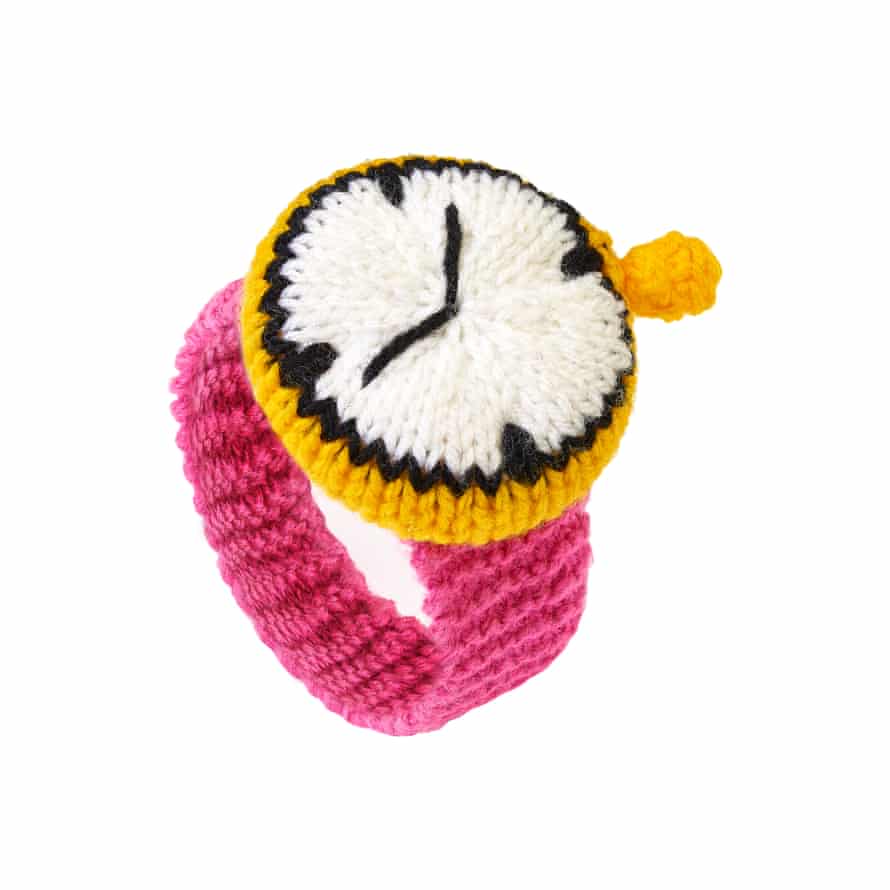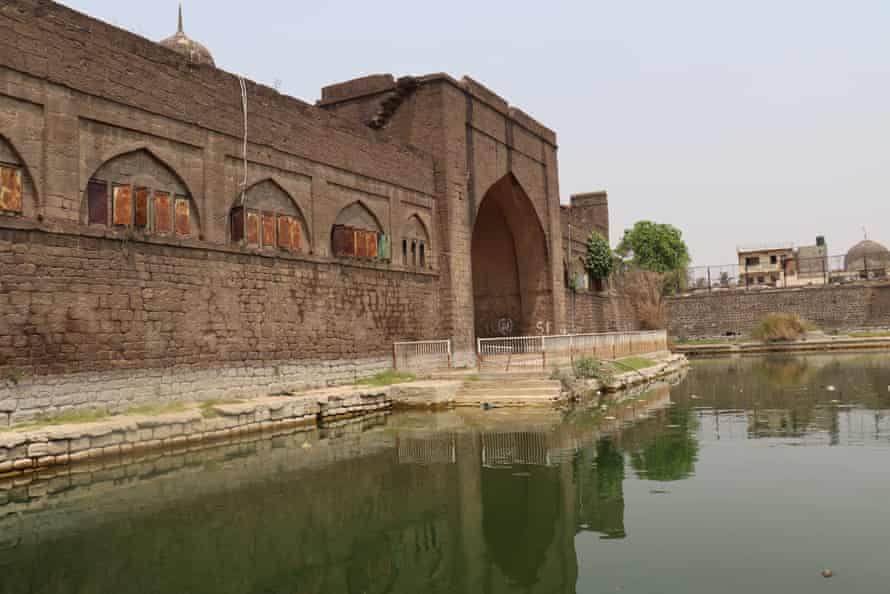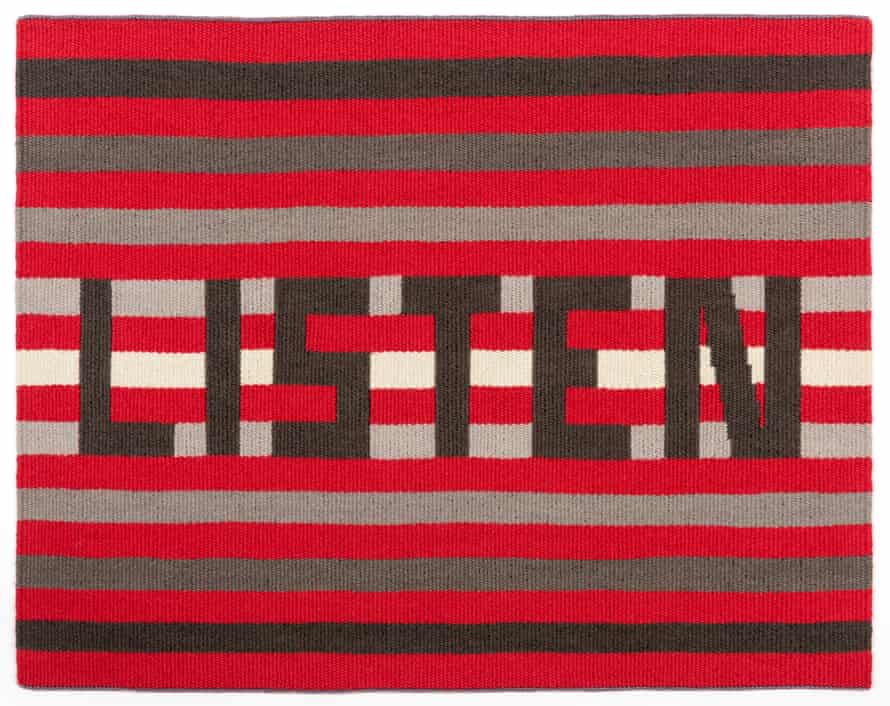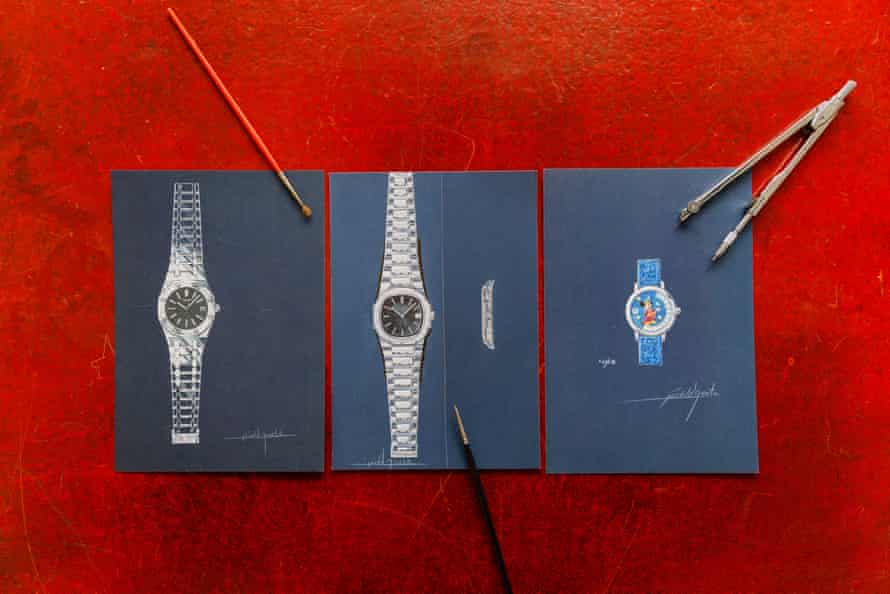February design news: bone light switches and feminist jewellery | Design
Design sometimes feels like a constant search for a better, brighter way to live life. A quest for new and innovative alternatives to the status quo. But, increasingly, is is the past that is presenting solutions. Two of this month’s stories look at revival rather than invention. Industrial designer Souhaib Ghanmi is investigating new ways to use animal bone. Currently categorised as a waste product of animal farming, this traditional material can also be used as a electrical and thermal insulator that’s also biodegradable. A great alternative to plastic.
The traditional water storage solutions of India are being similarly reappraised. Renovating historical wells and tanks may combat climate change and provide the solution to current water shortages.
It looks like we’re finally learning, new isn’t always better.
Innovative new uses for bone

“Plastic is one of the world’s biggest pollutants,” says Swiss Tunisian industrial designer Souhaib Ghanmi. “So I was interested in finding a potential substitute. In the past, bone was used as an equivalent to plastic, so it seems obvious to return to it.”
His father came from a family who worked with cattle and Ghanmi had grown up watching his uncle use cow bones to make knife handles. A far better fate for a slaughterhouse byproduct than incineration. “Bone is not exploited enough, in spite of its numerous properties. It’s an electrical and thermal insulator – and it’s biodegradable.”
Ghanmi’s recycling research took beautiful shape for his diploma project, Elos, created during his time at the École cantonale d’art de Lausanne. The Elos range of light switches and plug sockets are made with bone powder, and the plug socket design is inspired by the articulated action of the femur bone rotating in the hip socket. This pivoting creation not only looks elegant, but the added flexibility stops cables stretching and fraying.
“I’m questioning the use of bones which are currently just causing pollution when they’re burned,” explains Ghanmi. “We should make maximum use of these animals.”
Celebrating Tatty Devine

A new exhibition, Misshapes, celebrates the work of British jewellery label Tatty Devine. Next month, Hove Museum & Art Gallery will host the touring retrospective of work by Harriet Vine and Rosie Wolfenden, whose laser-cut acrylic necklaces have been style staples since they started their label in 2001.
Over the years, Tatty Devine has made eclectic pendants and earrings in the shape of zips, lobsters, melon slices, typewriters and almost anything else you can think of. The aesthetic is fun but powerful, with a feminist slant. The label tends to collaborate with organisations such as the Fawcett Society and Young Women’s Trust, rather than fashion labels.
Vine and Wolfenden met and clicked while studying at Chelsea College of Art & Design and then, in 1999, after graduation, Wolfenden was working at a vintage clothes shop when a browsing Vogue stylist asked where she got her headband. Wolfenden said it was from her own collection – and then had to design and make a collection, together with Vine, over the weekend when the stylist asked to see her work. This started a long collaboration with British Vogue, which frequently featured their accessories. A Tatty Devine cuff appeared on the magazine’s millennium cover, worn by Erin O’Connor.
Misshapes will feature over 100 pieces from the 23 years of Tatty Devine, from leather cuffs to their most popular necklaces.
Hedley Swain of Royal Pavilion & Museums Trust said: “We are so thrilled to have Tatty Devine at Hove Museum. Its work matches Brighton and Hove style beautifully. We want to develop the museum as the local home for creativity and making, so this exhibition is a perfect match.”
Misshapes is at Hove Museum from 5 March
Looking for answers in the past

While modernisation is often seen as a solution to infrastructure problems, the World Monuments Fund (WMF) is looking into India’s ingenious traditional water storage systems to see whether renovations could be a better answer to water access issues. WMF is an independent organisation dedicated to preserving cultural heritage in diverse communities around the world, and the historic water capture methods in India are unique. Saving everything from monsoon deluges to agricultural runoff was achieved through sophisticated reservoirs, tanks and ponds. Systems were often particular to each region, as drought and flood conditions varied so much. Some structures, such as jhalaras and bawaris, look as if they’re designed by Escher.
Many have fallen into disrepair. During the Empire, the British replaced the local authorities with a pan-Indian, centrally organised water system. This was based on land ownership, rather than community needs, and took control of the water supply out of the hands of women who had collected and overseen these domestic arrangements.
The WMF will assess whether the traditional structures, such as the Taj Bawdi water tank in Bijapur, can be renovated to fulfil local needs once more. “As climate change intensifies around the world, impacting our built environment, WMF India is committed to working with communities to develop solutions,” says Amita Baig, WMF India executive director. “We look forward to developing this important initiative aimed at increasing access to clean water for communities across India.”
Sign up for the monthly Design Review newsletter
Sign up for the Design Review newsletter to get a monthly dose of creative inspiration
London’s Collect fair celebrates the best of craft

Collect, the Crafts Council’s fair, takes place at London’s Somerset House this week. As the Crafts Council celebrates its 50th anniversary, Collect consolidates its reputation as one of the leading international fairs for living makers. After going online for the last two years, 2022 promises some spectacles to see in person, such as Fung+Bedford’s glorious origami sculptures, as well as talks and events with textile artist Alice Kettle and Loewe Foundation Craft Prize finalists including jeweller Edu Tarin, embroidery expert Celia Pym and sculptor David Corvalán.
Collect will also feature new artists, such as Amanda McCavour who is presenting a cascade of embroidered poppies. Jemma Gowland’s feminist porcelain figurines and Caron Penney’s tapestries will also be on show. The youngest exhibitor Jasmine Linington, showing with Craft Scotland, makes sustainable seaweed fibre textile pieces.
“We’re delighted to be returning to a physical fair at Somerset House,’’ says fair director Isobel Dennis. “It’s an exceptional environment for contemporary craft.”
The Collect Fair takes place 25-27 February at Somerset House and on Artsy.net until 6 March
Design community contributes to LBGTQ+ pop-up

When a new pop-up LBGTQ+ community centre opened in London last December, it was with an interior that was not only welcoming but extremely chic. The former shop in Southwark had been designed by queer architect Martha Rawlinson and fitted out by a crew of LBGTQ+ builders but, when it came to furniture, the team wanted to be sustainable while creating a welcoming environment. The centre was, after all, a sober sanctuary, a place for groups combating isolation in the queer community, bringing different generations together in a friendly setting and offering LGBTQ+-specific services, such as sexual health testing and mental health support.
Communications agency Zetteler put out a call to the design industry and received an overwhelming response. Furniture maker Benchmark donated 10 bespoke café tables in solid oak. Eames chairs arrived from The Office Group and Anglepoise gave 10 lamps. Universal Design Studio provided 15 of Vitra’s colourful Tip Ton chairs. Many others gave very generously.
“We wanted the space to be bright and homely, but to have as little impact on the planet as possible,” says Sarah Moore, volunteer director of the centre. “We wrote a sustainability statement along with our furniture call-out, and Zetteler’s clients and contacts helped us source the most amazing items.”
The Southwark centre is a six-month pilot but there are hopes this will become a permanent project.
The genius of Gérald Genta

The watch industry is big business, but it is not one built on innovation. The famous Swiss brands release new watches on a weekly basis, but such newness typically amounts to little more than a different coloured dial or slightly smaller case.
There was one freelance watch designer, though, who made innovation his business. Gérald Genta considered himself an artist before he considered himself a watch designer – he is said to have sketched out 100,000 ideas in his lifetime, and delighted in the nickname “the Picasso of watchmaking”.
It’s no exaggeration to say some of Genta’s most celebrated designs from the mid-70s – the octagonal-shaped Royal Oak, for the brand Audemars Piguet; the steel Nautilus for Patek Philippe, the first “luxury sports watch” – remain cornerstones of those brand’s businesses today.
Genta died in 2011 and his estate is overseen by Evelyne Genta, his widow, whose diplomatic day job has the unimprovable title of Ambassador of the Principality of Monaco to the Court of St James’s to the United Kingdom.
There will be a lot of Genta activity this year, including an exhibition. It is also the 50th anniversary of his Royal Oak, something Audemars Piguet will be making noise about.
First up, Evelyne is auctioning off a selection of her husband’s remarkable freehand paintings; first at Sotheby’s in Geneva until February 24, then Hong Kong in March and New York in April. In May, Genta’s own personal Royal Oak will go under the hammer. That has a pre-sale estimate of $300,000 to $500,000.
Pictures of watches aren’t for everyone but we urge you to at least a look at Sotheby’s Gérald Genta: Icon of Time, if only to transport yourself back to a time of true watchmaking craftsmanship, an era before telling the time was just another app on the now ubiquitous Apple Watch.
